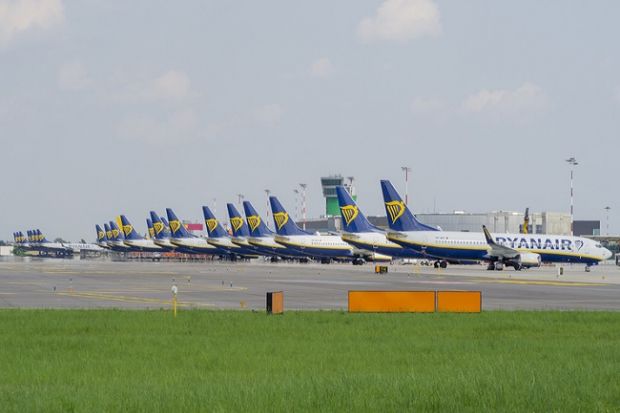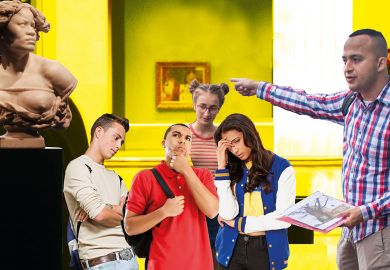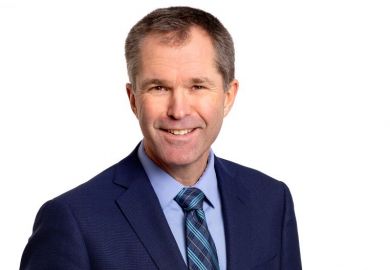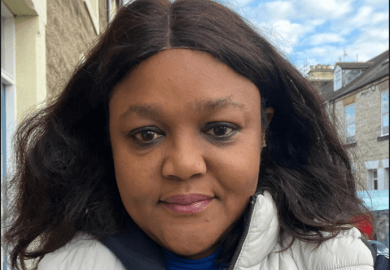“I don’t read white feminists because they don’t help me go home to my Indian mum and dad.”
So declared one of my second-year students in the United Arab Emirates when we were discussing International Women’s Day a few years ago. And I was affected by that comment more than by the plethora of texts I was reading on decolonising the curriculum at the time. It was one of those light-bulb moments. Of course white feminists wouldn’t help. But who could – and what role, if any, could I play in bringing them to my students’ attention?
“Gendering” the curriculum refers to the process of examining and addressing potential gender biases, imbalances or stereotypes in educational materials, course content and pedagogical approaches. It goes alongside decolonisation, which does the same for racial biases and has become increasingly prioritised in recent years.
As an academic with a seasoned history in UK transnational education (TNE), in Tunisia and Malaysia as well as the UAE, I have seen a variety of different curricular models over the years. These range from a one-size-fits-all model built out of British values to the model at my current institution, which allows academic freedom and contextualisation within a framework of set learning outcomes. I have also seen support grow to decolonise the curriculum at my “home” institutions. But few have questioned how the one-size-fits-all model can fit within a project of decolonisation. My student’s comment brought it home to me that it can’t.
Rather, it spotlighted the importance of understanding how gender intersects with other aspects of identity, such as race, ethnicity, culture and religion. Decolonising and gendering the curriculum requires a nuanced approach that considers the diverse experiences, perspectives and cultural contexts of learners. In the case of gender, I realised that my role extended beyond simply introducing new texts or perspectives; it was about creating a space where students could engage with gender issues through the lens of their own lived experiences and cultural backgrounds.
This tension between decolonisation and the global higher education franchising model – which often exports a particular, culturally-bound curriculum wholesale – raises profound questions about the very nature of TNE. The franchised university risks perpetuating a neocolonial dynamic, imposing Eurocentric norms and perspectives under the guise of providing a “universal” education.
I have always gendered my curricula whatever the course: from peacekeeping to media research methods, marketing strategy and tourism management. I haven’t always done so successfully, however. I still remember the blunder of 2017, when I presented, as an example of gendered advertising, a Ryanair ad promising “red hot fares and crew”, complete with bikini-clad model. I was fresh off the plane and lacked the social and cultural understanding of what was appropriate – not to mention relevant – in Dubai. One of my male postgraduates respectfully asked me not to show any more images like that, and the dismay hit me with visceral intensity. I had broken social and cultural norms to discuss a genre of advert that isn’t even in circulation in the UAE.
Nor are the risks of failing to tailor content to local sensibilities confined to moments of cultural cringe. Cultural ignorance or arrogance could even threaten the longevity of overseas teaching careers.
Over time, I have learned not to diminish the importance of Western feminist thought in my teaching in the UAE, but rather to situate it within a broader tapestry of perspectives, allowing students to engage with gender issues in a way that feels relevant and meaningful to their cultural identities and experiences. When designing classes, I read what has been published on the topic from the country I am teaching in to understand what is appropriate and relevant, and what I can build on.
But it would be better for this process to be more structured and collaborative. The way forward is for universities with TNE models to establish networks across their teaching campuses to adapt and contextualise curricula in an iterative process informed by the voices and lived realities of all stakeholders, including staff (both home and abroad), local government and organisations, and, most importantly, students. It requires a posture of humility, a commitment to ongoing learning and self-reflection, and a genuine appreciation for the richness and complexity of cultural diversity.
The financial impetus to develop TNE offerings does not look set to diminish any time soon. But getting this right does not stand to benefit only the “home” institution financially. There are also deeper lessons to be learned from teaching very different cohorts of students, especially those related to becoming more inclusive. Examples include how to support students better during religious observances, how to deliver academic skills support in a way that speaks to students from different cultural backgrounds, and even how to decolonise the curriculum.
Ultimately, all models of TNE must evolve from being unidirectional purveyors of knowledge to pluralistic spaces where diverse perspectives converge. By embracing this mindset, educators can navigate the nuances of TNE with greater sensitivity and create truly inclusive and transformative learning experiences.
Heather Jeffrey is lecturer in marketing and head of subject at the Birmingham Business School, University of Birmingham Dubai.
Register to continue
Why register?
- Registration is free and only takes a moment
- Once registered, you can read 3 articles a month
- Sign up for our newsletter
Subscribe
Or subscribe for unlimited access to:
- Unlimited access to news, views, insights & reviews
- Digital editions
- Digital access to THE’s university and college rankings analysis
Already registered or a current subscriber? Login








